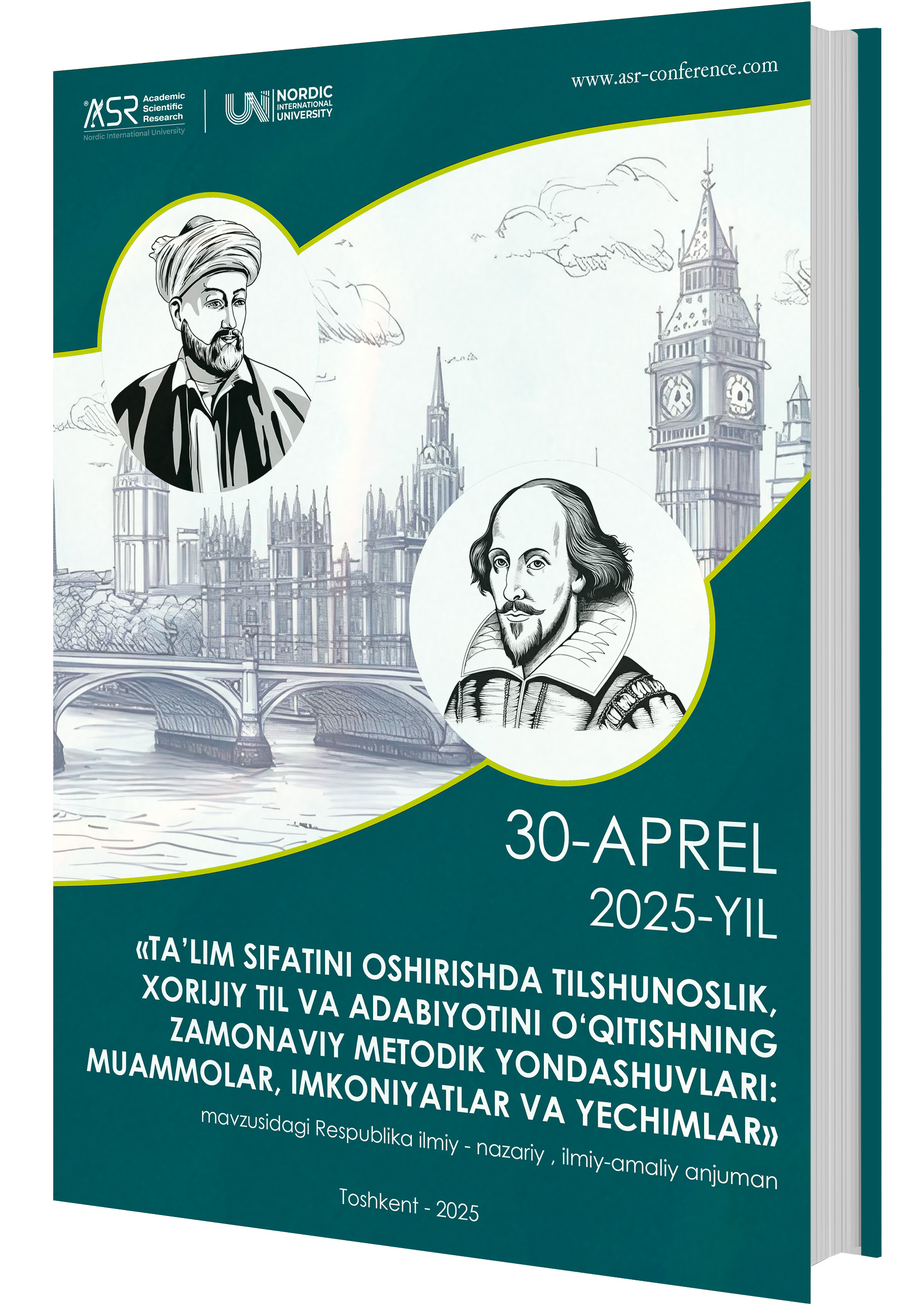LACONISM AS A POWERFUL LITERARY TOOL IN SHORT STORIES
Аннотация
This article delves into the concept of “laconism” as a literary device, with a particular focus on its role in short stories. It examines how laconism serves as a bridge between the writer and the reader, creating an interactive and immersive literary experience. The study underscores the effectiveness of this concise writing style, demonstrating its ability to convey profound meaning with minimal words and its powerful impact on the reader. By analyzing the works of Ernest Hemingway, Raymond Carver, and Lydia Davis, this paper contends that laconism transcends mere stylistic preference, functioning instead as a deliberate narrative strategy that enhances emotional depth, fosters reader engagement, and enriches thematic resonance. Through an exploration of the relationship between brevity and meaning, this study illustrates how laconism disrupts conventional narrative forms, encouraging readers to actively participate in uncovering the story’s deeper layers.
Библиографические ссылки
Bethea, Arthur. Technique and Sensibility in the Fiction and Poetry of Raymond Carver. Routledge, 2009.
Carver, Raymond. Cathedral. Vintage, 1983.
Davis, Lydia. Break It Down. Farrar, Straus and Giroux, 1986.
Fish, Stanley. Is There a Text in This Class? The Authority of Interpretive Communities. Harvard University Press, 1980.
Frost, Laura. The Problem with Pleasure: Modernism and Its Discontents*. Columbia University Press, 2017.
Genette, Gérard. Narrative Discourse: An Essay in Method. Cornell University Press, 1980.
Hemingway, Ernest. Hills Like White Elephants. In Men Without Women, Scribner, 1927.
Hutcheon, Linda. A Poetics of Postmodernism: History, Theory, Fiction. Routledge, 1988. .
Iser, Wolfgang. The Act of Reading: A Theory of Aesthetic Response. Johns Hopkins University Press, 1978.
Jameson, Fredric. Postmodernism, or, The Cultural Logic of Late Capitalism. Duke University Press, 1991.
Johnson, Mark. Minimalism and the Short Story. Cambridge University Press, 2020.
Lamb, Robert Paul. "Hemingway and the Creation of the Twentieth-Century Short Story. The Cambridge Companion to Hemingway*, edited by Scott Donaldson, Cambridge University Press, 1995.
Lohafer, Susan. Reading for Storyness: Preclosure Theory, Empirical Poetics, and Culture in the Short Story. Johns Hopkins University Press, 2003.
May, Charles. The Short Story: The Reality of Artifice*. Twayne Publishers, 1995.
Smith, Sarah. The Power of Brevity: Laconism in Modern Literature. Journal of Literary Studies, vol. 34, no. 2, 2018, pp. 45-60.
Загрузки
Опубликован
Выпуск
Раздел
Лицензия
Copyright (c) 2025 Barchinoy Zokirova

Это произведение доступно по лицензии Creative Commons «Attribution-NonCommercial» («Атрибуция — Некоммерческое использование») 4.0 Всемирная.
Условия лицензии
Эта работа доступна под лицензией Creative Commons Attribution-NonCommercial 4.0 International License. Чтобы просмотреть копию этой лицензии, посетите http://creativecommons.org/licenses/by-nc/4.0/ или отправьте письмо по адресу Creative Commons, PO Box 1866, Mountain View, CA 94042, США.
По этой лицензии вы можете:
Поделиться — копируйте и распространяйте материал на любом носителе и в любом формате.
Адаптируйте — делайте ремиксы, трансформируйте и дорабатывайте материал.
Лицензиар не может отозвать эти свободы, если вы соблюдаете условия лицензии. На следующих условиях:
Атрибуция. Вы должны указать соответствующую ссылку, предоставить ссылку на лицензию и указать, были ли внесены изменения. Вы можете сделать это любым разумным способом, но не таким образом, который бы предполагал, что лицензиар одобряет вас или ваше использование.
Некоммерческое использование — вы не имеете права использовать материал в коммерческих целях.
Никаких дополнительных ограничений. Вы не имеете права применять юридические условия или технологические меры, которые юридически запрещают другим делать все, что разрешено лицензией.





